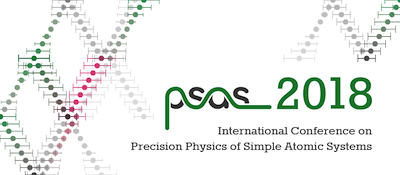Speaker
Description
Towards a search for Dark Matter using atomic Dysprosium
A. Sharma a,b, M. Leyser a,b, A. V. Viatkina a,b, L. Bougas a,b and D. Budker a,b
a Helmholtz Institut Mainz (HIM), Johannes Gutenberg Universitat, Mainz 55128, Germany
b Institut fur Physik, Johannes Gutenberg Universitat, Mainz 55128, Germany
Studies of rotation curves of galaxies, initiated by Oort & Zwicky (1930’s) and later by Rubin (1970’s) led to the Dark Matter (DM) hypothesis and the subsequent evidence for the existence of Dark Matter and Dark Energy. Search for the elusive dark matter candidates has been going on since the early 1970‘s. Oddly, the Standard Model (SM) with all its tremendous successes (most notably, in the recent past, being the discovery of the Higgs boson at the LHC, CERN) has so far failed to provide an insight into the candidates that may directly or indirectly relate to Dark Matter or Dark Energy.
Experimental efforts (including the ones at the LHC, CERN) initiated towards the search of axions and WIMPs (Weakly Interacting Massive Particles), both of which are potential Dark Matter candidates, have still not produced any definitive outcome related to the origin of Dark Matter and the still yet elusive, Dark Matter particles. In our group, we are trying to search for possible Dark Matter (DM) candidates through precision atomic spectroscopy on dysprosium (Dy) atoms. Dysprosium (Dy) is an atomic system that has in the past been used for searching for possible variations of fundamental constants [1] with the aim of constraining possible dark matter candidates and also exploited for the search of parity-violating effects mediated by cosmic fields that may be part of dark matter. This experiment was also used towards a search for ultralight dilatonic dark matter [2] (that was also used to improve constraints on possible quadratic interactions of scalar dark matter by 15 orders of magnitude), and most recently, a search for possible exotic interactions sourced by massive bodies and mediated by light scalar bosons [3].
We are proposing to use the same system for performing precision ISS (Isotope Shifts Spectroscopy) measurements with sub-Hz precision, with the aim of searching for New Physics (NP) beyond the Standard Model (BSM) through possible non-linearities that may arise on a King Plot (KP) [4]. The idea is based on isotope shifts spectroscopy (ISS) and establishing a King Plot (KP) through frequency measurements across multiple isotopes of dysprosium (Dy) in the RF (Radio Frequency) and the optical domain. In an ideal scenario, the King Plot (KP) is linear with mass and frequency ratio scaling measured for two different transitions across multiple isotopes. Non- linearities in the King Plot may arise from possible dark matter candidates that couple to the atomic nucleus and electrons through short range forces. I shall present our experimental efforts that have been initiated towards this end with an emphasis on the current status and possible experimental outcomes.
————————
[1] N. Leefer et al., Phys. Rev. Lett. 111 (2013) 060801.
[2] K. van Tilburg et al., Phys. Rev. Lett. 115 (2015) 011802. [3] N. Leefer et al., Phys. Rev. Lett. 117 (2016) 271601.
[4] J. C. Berengut et al., arXiv:1704.05068 [hep-ph]
| print service | yes, I'd appreciate a poster print service |
|---|

